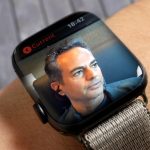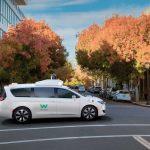Our research establishes the foundation for the intelligent, connected infrastructure critical to smart cities.
Quick Links:
Societal Impact
Tech Transfer
Publications
People
To fully deliver on the promise of a unified smart city, sensors (and actuators) deployed by a diverse group of stakeholders (ranging from private citizens to corporations to government organizations) must be orchestrated seamlessly and securely. The data that is generated by these networks will be integrated with user-generated information, analyzed on dispersed resources, and communicated to various disparate parties. Data science plays a critical role in every aspect of these systems, and IMSC has been especially effective in the collection, analysis, and transmission of real urban data. Specifically, we have been working to make our cities safer and cleaner.
One area IMSC has paid special attention to is emergency response systems and resilience, which are among the most crucial dimensions of future smart city design. Using social media data (such as Twitter messages and Flickr images) as well as crowdsourced images and videos (i.e., mobile camera sensors), we have studied enhancing situation awareness during disasters. Our visual data collection framework (using MediaQ platform) automatically initiates visual data crowdsourcing immediately after a disaster happens (e.g., earthquake) and achieves maximum visual awareness with minimum resources.

Societal Impact
Our disaster situation awareness framework was incorporated with the US NGA’s (National Geospatial Intelligence Agency) GeoQ disaster information integration platform to provide a better visual awareness in actual disaster.
Another example of our smart city efforts is to make the streets of Los Angeles cleaner using data science. As part of Los Angeles Mayor Eric Garcetti’s Clean Streets initiative, the City’s Bureau of Sanitation drives all of LA’s public streets and alleys quarterly (covering a distance of over 22,000 miles) and assigns each block a “cleanliness index” from 1-3: 1-Clean, 2-Somewhat Clean, 3-Not Clean. Currently, the cleanliness indexes are manually collected, so it is not frequently updated. It would be a great improvement, therefore, if the streets could be monitored more frequently and automatically evaluated for cleanliness, while taking special note of any added requirements, such as detecting larger abandoned objects like furniture.

In collaboration with the Sanitation Department of LA, IMSC is currently developing a framework to automatically detect the cleanliness of streets as well as any special objects in need of removal. The framework makes use of machine learning technology trained on images and videos collected by the city and/or taken by citizens. The images taken by mobile cameras (LA City’s garbage collection trucks and citizens’ smartphones using the MediaQ App) are transferred to the MediaQ server through the I3 (Intelligent IoT Integrator) platform. Theses images can then be automatically classified based on predefined cleanliness indexes and object types (such as bulky item, illegal dumping).

Tech Transfer
IMSC is currently performing a federally funded project (joint international research collaboration between US NSF and Japan JST) about Big Data in Disasters (BDD) using MediaQ. In addition, the MediaQ team collaborated with US NGA’s GeoQ team (NGA’s major effort to integrated platform to manage disaster data) for the integration of two systems (i.e., MediaQ and GeoQ) for more effective use of mobile video data in disaster situation.

Selected Publications
Sasan Tavakkol, Hien To, Seon Ho Kim, Patrick Lynett, Cyrus Shahabi. An Entropy-based Framework for Efficient Post-disaster Assessment based on Crowdsourced Data. ACM SIGSPATIAL Workshop on Emergency Management using GIS in conjunction with ACM GIS 2016, Oct. 31, 2016.
Hien To, Seon Ho Kim, Cyrus Shahabi. Effectively Crowdsourcing the Acquisition and Analysis of Visual Data for Disaster Response. IEEE International Conference on Big Data (IEEE Big Data 2015), pp. 697-706, Oct. 2015.
Guanfeng Wang, Ying Lu, Luming Zhang, Abdullah Alfarrarjeh, Roger Zimmermann, Seon Ho Kim and Cyrus Shahabi. Active Key Frame Selection for 3D Model Reconstruction from Crowdsourced Geo-tagged Videos. IEEE International Conference on Multimedia and Expo (ICME), pp. 1-6, July 2014.
Seon Ho Kim, Ying Lu, Junyuan Shi, Abdullah Alfarrarjeh, Cyrus Shahabi, Guanfeng Wang, Roger Zimmermann. Key Frame Selection Algorithms for Automatic Generation of Panoramic Images from Crowdsourced Geo-tagged Videos. Web and Wireless Geographical Information Systems (W2GIS), LNCS8470, pp. 67-83, May 2014.
Seon Ho Kim, Ying Lu, Giorgos Constantinou, Cyrus Shahabi, Guanfeng Wang, Roger Zimmermann. MediaQ: Mobile Media Management Framework. ACM Multimedia Systems Conference (MMSys), pp. 224-235, March 2014.
Cyrus Shahabi, Seon Ho Kim, Luciano Nocera, Giorgos Constantinou, Ying Lu, Yinghao Cai, Gerard Medioni, Ramakant Nevatia, and Farnoush Banaei-Kashani, Janus – Multi Source Event Detection and Collection System for Effective Surveillance of Criminal Activity, In the Journal of Information Processing Systems (JIPS), Vol. 10, No. 1, pp 1-22, 2014.
Research
Platforms
Sponsors

People
Faculty
- Cyrus Shahabi (USC, Dept. of Computer Science)
- Ram Nevatia (USC, Dept. of Computer Science)
- Gerard Medioni (USC, Dept. of Computer Science)
-
Patrick Joseph Lynett (USC, Dept. of Civil Engineering)
IMSC Research Staff
- Seon Ho Kim (Associate Director)
- Luciano Nocera (Associate Director)
- Su Young Kim (Research Intern)
Students
- Abdullah Alfarrarjeh (Ph.D. Student, CS)
- Chrysovalantis Anastasiou (Ph.D. Student, CS)
- Dimitris Stripelis (Ph.D. Student, CS)
- Giorgos Constantinou (Ph.D. Student, CS)
- Sasan Tavakkol (Ph.D. Student, Civil Eng.)
- Sumeet Agrawal (MS, CS)
Notable Alumni
- Hien To (Amazon MTurk)
- Songhua Xing (Oracle)
External Collaborators
- Asanobu Kitamoto, Helmut Prendinger (National Institute of Informatics, Japan)
- Stephen Jones (MITRE, USA)
- Raymond D. Bauer (NGA GeoQ Team, USA)






